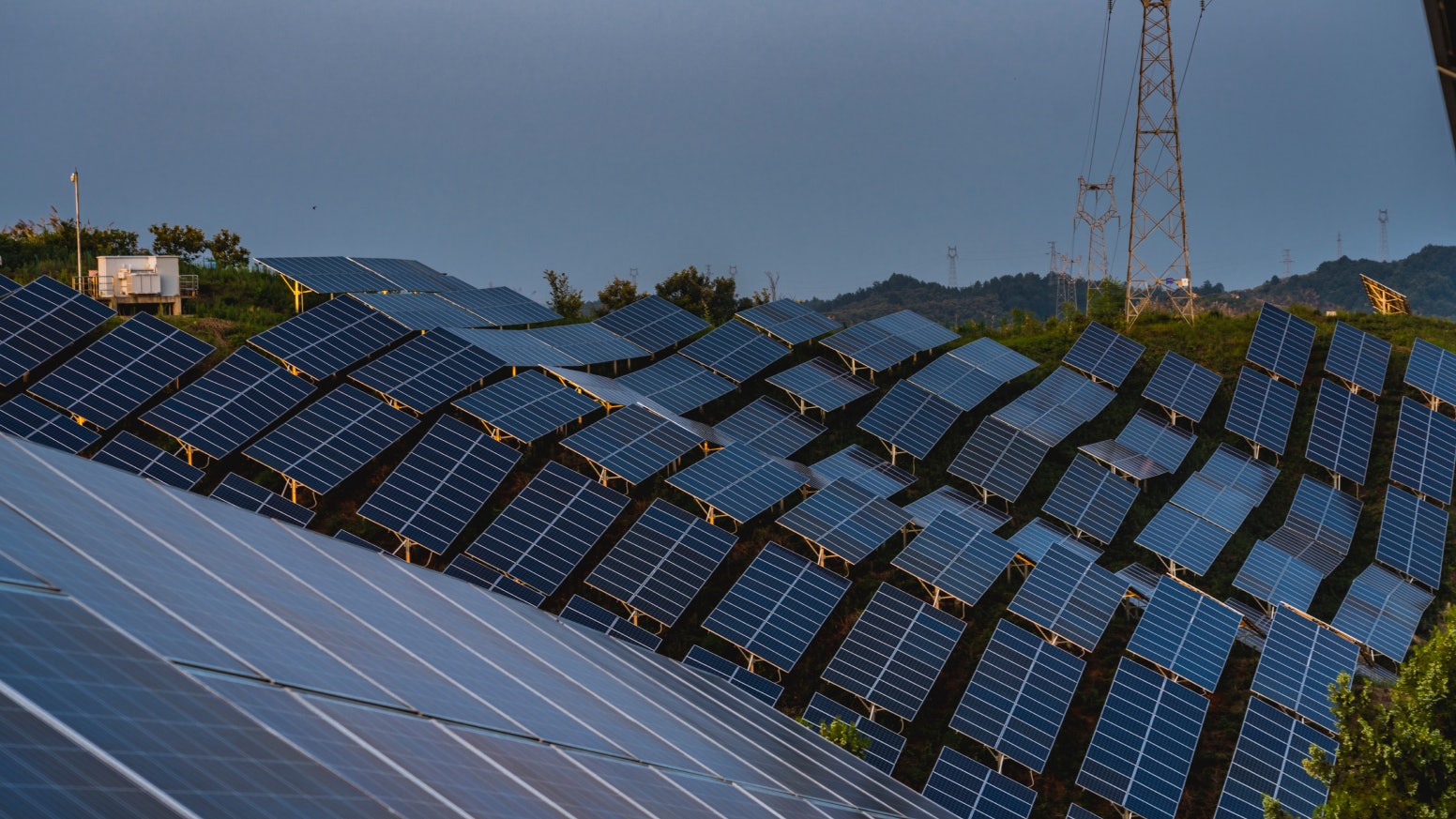Your solar panels could soon work at night

One of the most popular clean energy sources in North America, solar power, has skyrocketed in use in the U.S. over the last decade.Current estimates show that the volume of solar energy generated across installations nationally is enough to power 12 million American homes, and that number is only expected to grow.
The fatal flaw with solar, however, is in the name: Solar panels only collect energy when the sun is out.
They’re limited to generating energy during the day — but function less efficiently the cloudier it is outside, collecting an estimated 10 to 25 percent of their typical output on cloudy days.
But recent research from Soochow University in Suzhou, China, stands to change this. In 2018, a research team from the Institute of Functional Nano & Soft Materials crafted a solar cell that simultaneously generates electricity from sunlight and rainfall — allowing solar panels to continue to collect energy at full capacity during storms and subsequently expanding the duration of time at which a panel can function in any given day. Unlike typical solar panels, these panels would continue working on cloudy days and crucially, could even work at night.
The solar cells, which collect energetic photons from the sun and convert them into electrical current, are combined with an additional triboelectric nanogenerator (TENG), which collects mechanical energy from the movement of raindrops hitting and rolling across the surface of the panel.
The idea behind the design is not new, but according to Dr. Boaquan Sun, Soochow University researcher on the project, his team’s design is simpler and more lightweight than any existing technology with the same function, making it far more feasible for widescale use.
The panels made headlines internationally in the spring of 2018 when Sun and his team’s work was initially published. But since then, the lab has continued working tirelessly to improve the efficiency and cost of the technology in order to prepare the device to go to market. Patents are currently still pending.
In addition to marketing the device for standalone purchase, Boaquan told Arcadia that he hopes the solar cell technology will be integrated into existing solar panels to improve their overall efficiency. He and his team are also exploring the possibility of integrating technology to collect other forms of power, like wind and thermal, into the device, allowing it to generate clean energy from a range of sources at once.
The state of solar is seemingly in constant flux… but new technologies improving the potential of this renewable resource are well-poised to change the way we power our homes.
The design’s creation follows a growing number of innovations in the solar space as the energy source increases in popularity. In 2013, for example, a startup launched out of MIT crafted residential SolarSkin panels, designed to blend in with the roof upon which they’re mounted. The “aesthetic solar” startup aimed to increase uptake rates in residential solar power use among consumers who found regular solar panels to be unsightly — and in the years since, they’ve had tremendous success.
The panels made headlines more recently when one Indianapolis resident’s proposal to install regular solar panels on all sides of his home was rejected by his local homeowner’s association for failing to “fit the aesthetic expectations of the community.” After a long fight with his local community, the resident eventually proposed installing solar skin panels on his roof and was granted permission.
More recently, in 2019, a research group at the King Abdullah University of Science and Technology in Saudi Arabia pioneered a solar panel design that simultaneously generates energy from solar photons while collecting and purifying water. The design, which researchers admit will require a fair amount of tweaking before it’s usable on a large scale — could have tremendous impact, a double whammy for communities lacking access to both power and clean drinking water.
The state of solar is seemingly in constant flux. But as researchers all over the world work to improve the potential of this renewable resource, technologies like that of Soochow University are well-poised to change the way we power our homes.


